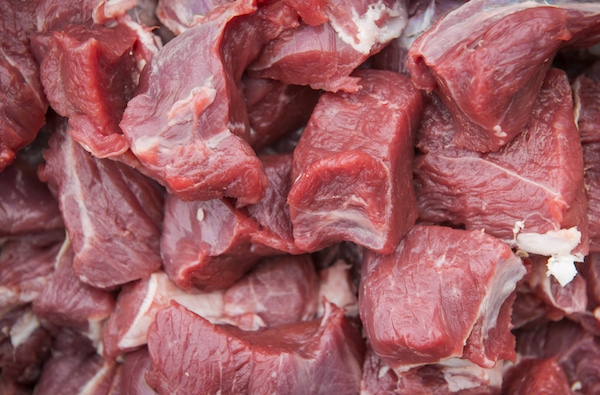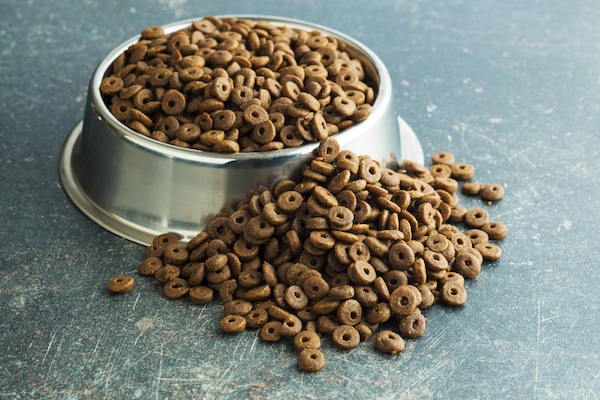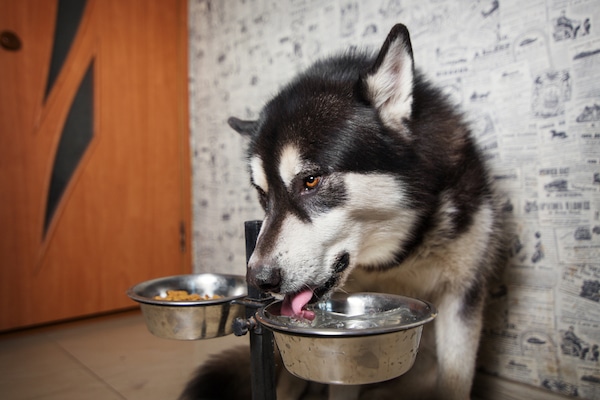Years ago, I lost my beloved Airedale Terrier, Beethoven, just days after I drove off to begin a new semester at college. He abruptly began having massive seizures due to large insulin spikes that medication couldn’t control. Within a matter of hours, he was gone… four months short of his seventh birthday.
The thing is, even as I’d been packing my bags, I recall mentioning how oddly lethargic Beethoven had seemed during my visit. He recognized me and continued to wag his tail; but something was just… off. His energy level was totally flat, devoid of any spark. We clearly should have seen this behavioral change as a crucial warning sign.
Beethoven was our very first family dog — and, like most well-meaning owners, our main priority had been giving him a long, healthy, comfortable life. So we’d been careful about choosing his food, only selecting bags of supermarket kibble that featured phrases like “vitality” and “nutritionally balanced” on the package. We’d provided full, clean bowls of water straight from the tap every day.

Airedale Terrier by Shutterstock
Yet even the groomer would frequently mention Beethoven’s chronic skin allergies and brittle coat issues. Sometimes she’d even comment on his excessive eye and nose discharge, or his itchy ears. My family was perplexed. Despite our best efforts — not to mention his purebred pedigree — Beethoven just seemed to be a sickly dog. During our increasingly frequent vet visits, he was often prescribed antihistamines, antibiotics, and eye and ear drops.
In the years since my sweet furry friend’s untimely passing, I’ve made it my personal mission to learn more about natural ways to support canine health and wellness. And what I’ve found has, at times, been pretty painful to acknowledge. Because it seems that many of our own well-intentioned diet and lifestyle choices may have hastened this wonderful pup’s demise.
Most of us are responsible, conscientious pet owners. Most of us feel loving devotion toward our loyal canines, and we want them to lead sustained, vibrant lives. I don’t know any pet parents fitting that description who intentionally try to cause their dogs harm.
Yet the truth is, pet food packaging can be incredibly misleading. Unfiltered tap water can contain a range of troubling toxins. And seemingly superficial skin, ear, and digestive issues can point to deeper systemic imbalances. I wonder how many loyal dogs like my Beethoven end up inundated with artificial ingredients, chemicals, toxins, and more — even as their owners try hard to “do the right thing.” Here are four key canine care lessons I learned … the hardest way of all.
1. All proteins aren’t created equal

Raw beef by Shutterstock
Dogs are carnivores who seem to function best with a consistent proportion of clean protein in their diets. Commercial pet food manufacturers produce meal options routinely promoted as “healthy” and “nutritionally balanced.” We humans are taught that these pre-packaged options make mealtime a breeze. Simply look for packaging that advertises “meat protein,” and feed the appropriate amount … right? Not so fast. In his book Natural Health for Pets, Dr. Richard H. Pitcairn cautions that canines need protein sources that are both digestible and bio-available. He specifically notes that the prolonged high temperatures used to process many meat-based commercial pet foods can eradicate crucial enzymes and amino acids.
Pitcairn also observes that most states allow commercial pet food companies to use what are called “4D” meat sources — i.e., ground-up tissues from animals that are “Dead, Dying, Disabled or Diseased.” Other ingredients may include elements rejected by the USDA for human consumption, such as rancid animal fat.
Veterinarian Dr. P.F. McGargle accumulated several years of personal experience as a federal meat inspector. He concluded that feeding the types of slaughterhouse waste he encountered could most certainly increase a pet’s odds of getting cancer, plus a range of other degenerative diseases. So when you see words like “meat by-product” or “dried animal digest” on a pet food ingredient label, put that package down and walk away. More importantly, realize that the vast majority of pet food you’ll find on a mainstream supermarket shelf will include phrases like this.
2. Kibble can offer empty calories

Dog food by Shutterstock
According to the Waltham Book of dog and cat nutrition, “there is no known minimum dietary carbohydrate requirement for either the dog or the cat. Based on investigations in the dog and with other species, it is likely that dogs and cats can be maintained without carbohydrates if the diet supplies enough fat or protein from which the metabolic requirement for glucose is derived.” This is not to say that carbohydrates will poison your pooch. But it is worth noting that most commercial kibbles are jam-packed with heavily processed carbs. Why? Often because such ingredients are comparatively cheap filler, so they help control manufacturing costs.
Since our canines don’t have a fixed carb requirement, holistic veterinarian Dr. Karen Becker notes that dog diets consisting of straight-up commercial kibble often pump a pup’s body full of unproductive ingredients — including genetically modified (GM) corn or soy, plus processed wheat and white rice. Over time, this can lead to system-wide allergic sensitivities that could impact digestion, blood sugar regulation, endocrine balance, liver function, and even overall immunity. In his Complete Guide to Natural Health for Dogs and Cats, Dr. Pitcairn mentions that outward signs of such systemic imbalance may include skin and coat issues, stomach troubles, chronic ear and/or paw itchiness, eye discharge, bad breath, runny nose, and more.
3. Labels reveal the real story
Usually, the front of commercial food packages look pristine. Photo of happy-looking dog, plus yummy-looking mealtime glamour shot? Check. Colorful catchphrases like “nutritionally balanced,” “promotes vitality,” or “contains real meat”? Check. Now flip that package over… and “check” the label. Remember that ingredients are listed in order of prominence, and you’ll often uncover a more sinister story. Here are just a few disturbing culprits:
- Animal by-products — See No. 1 above
- Corn syrup — An empty-calorie sweetener that can disrupt blood sugar levels
- Propylene glycol — Also used in brake fluid
- Sodium nitrite — Can break down into potent carcinogenic substances called nitrosamines
- BHT — Suspected by some scientists to cause liver impairment and serum cholesterol increase
- Artificial dyes like Red No. 40 and Yellow 5 — Linked to cancer, ADHD, and allergies
4. Even water can be worrisome

Husky drinking water by Shutterstock
Dr. Edward Group has noted that common, unfiltered tap water can contain up to a dozen health-impacting contaminants. Some of the more familiar elements on the list include:
- Chlorine — A reactive chemical that may cause memory loss and impaired balance, in sufficient quantities over time
- Lead — May damage the kidneys and cardiovascular system over time
- Mercury — An industrial byproduct that can cause nerve damage and skin issues
- PCB’s — Banned chemicals that can leach in from landfills to cause pronounced immunity and endocrine issues
The good news? It’s incredibly easy to find low-cost filters and filtration pitchers that remove many of H20’s more problematic elements. It could also be one of the kindest things you do for your furry friend.
It’s often instinctive for our dogs to suppress outward signs of distress. So as their human advocates, we need to watch for the numerous symptoms that (unbeknownst to us at the time) Beethoven was displaying. Better yet, don’t wait for things to progress that far. Read labels like a hawk. Serve filtered water. Switch your dog to a whole food-based diet with real, human-grade meat as the very first ingredient. In short, steer clear of fillers, animal by-products, preservatives, high carbohydrates, and chemicals you can’t pronounce. These are some of the smartest ways you can give your dog a wholesome, vital life.
The post 4 Lessons Every Pet Parent Should Learn to Help Give Their Dog a Healthy Life appeared first on Dogster.
No comments:
Post a Comment